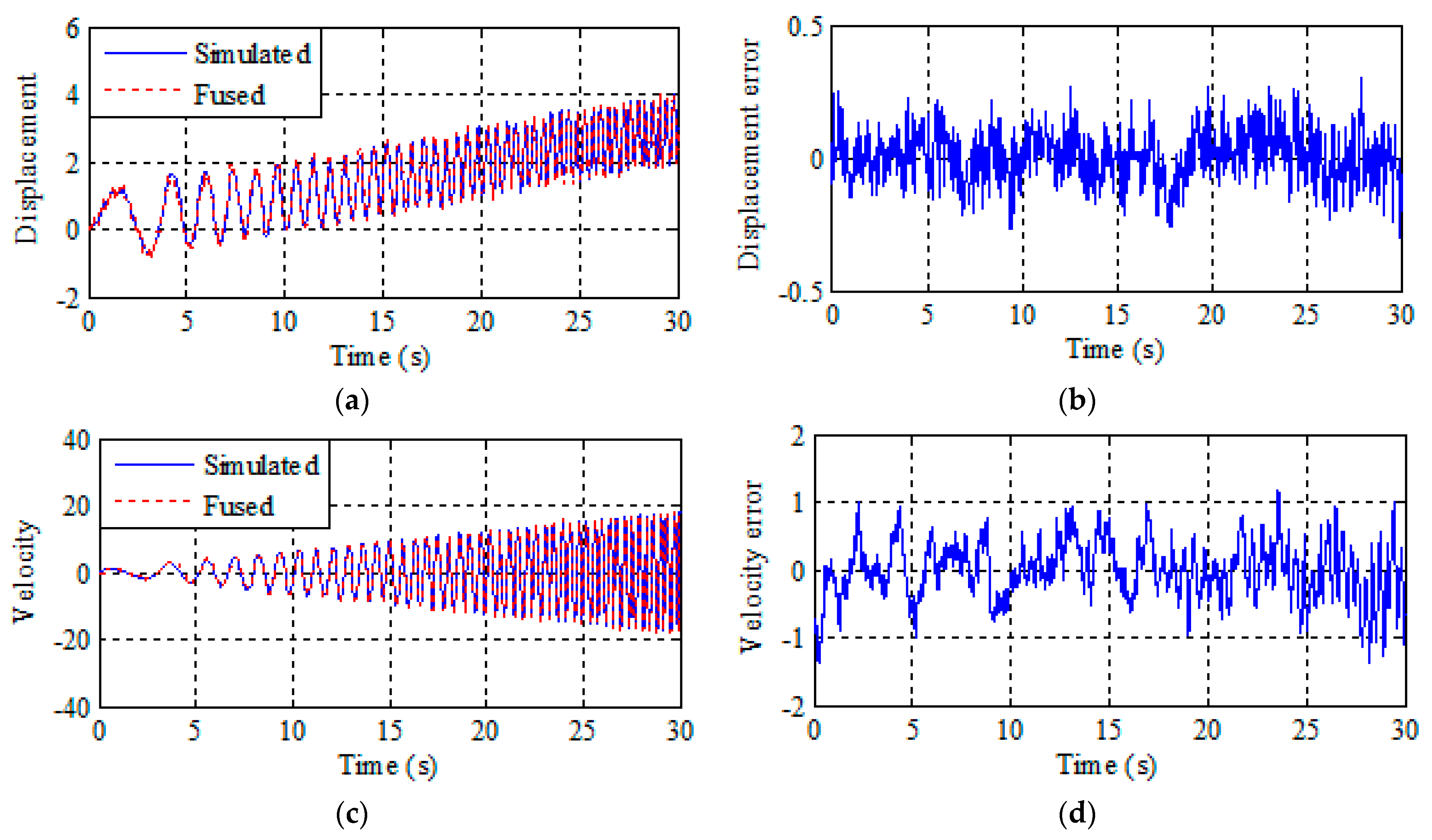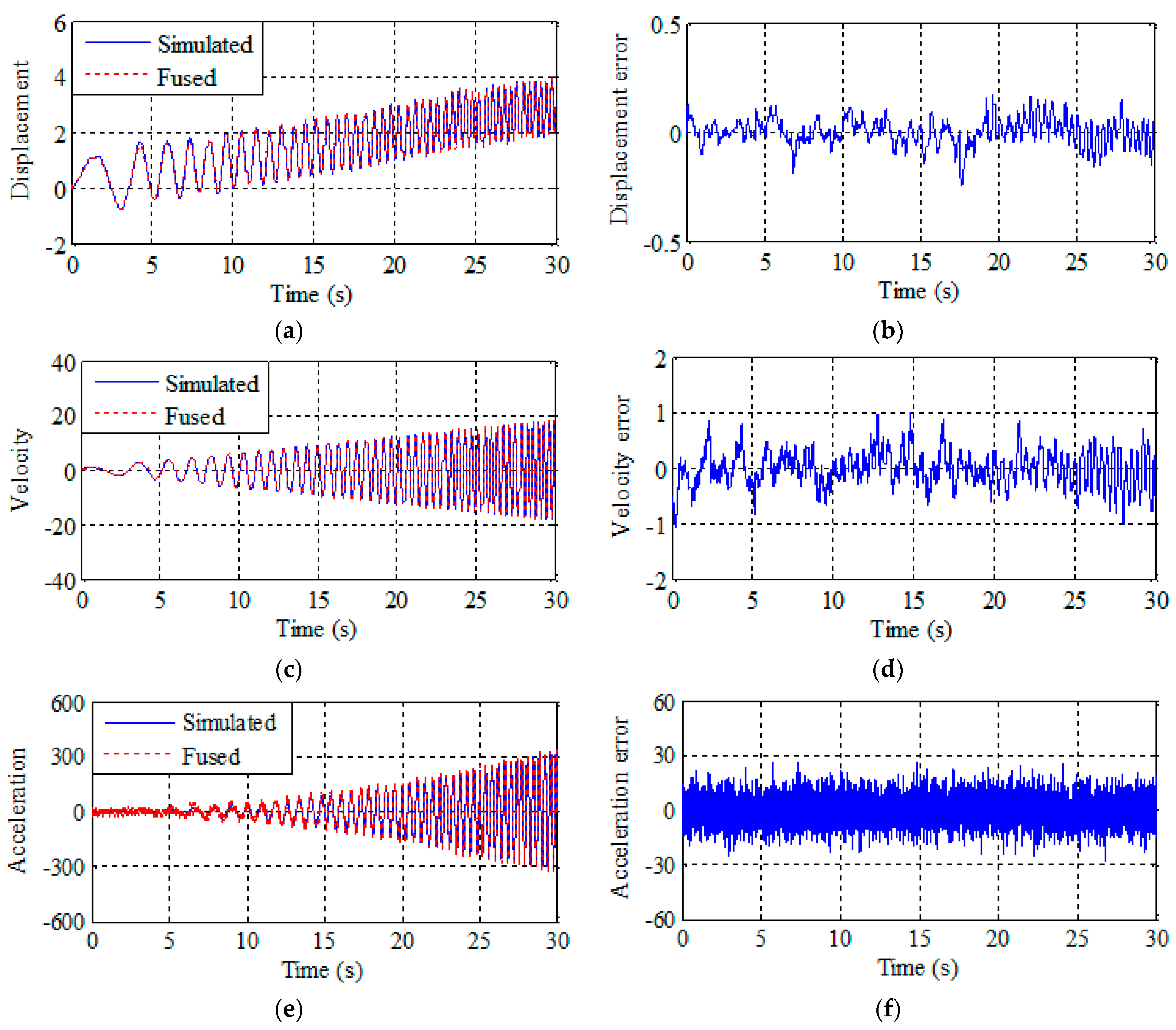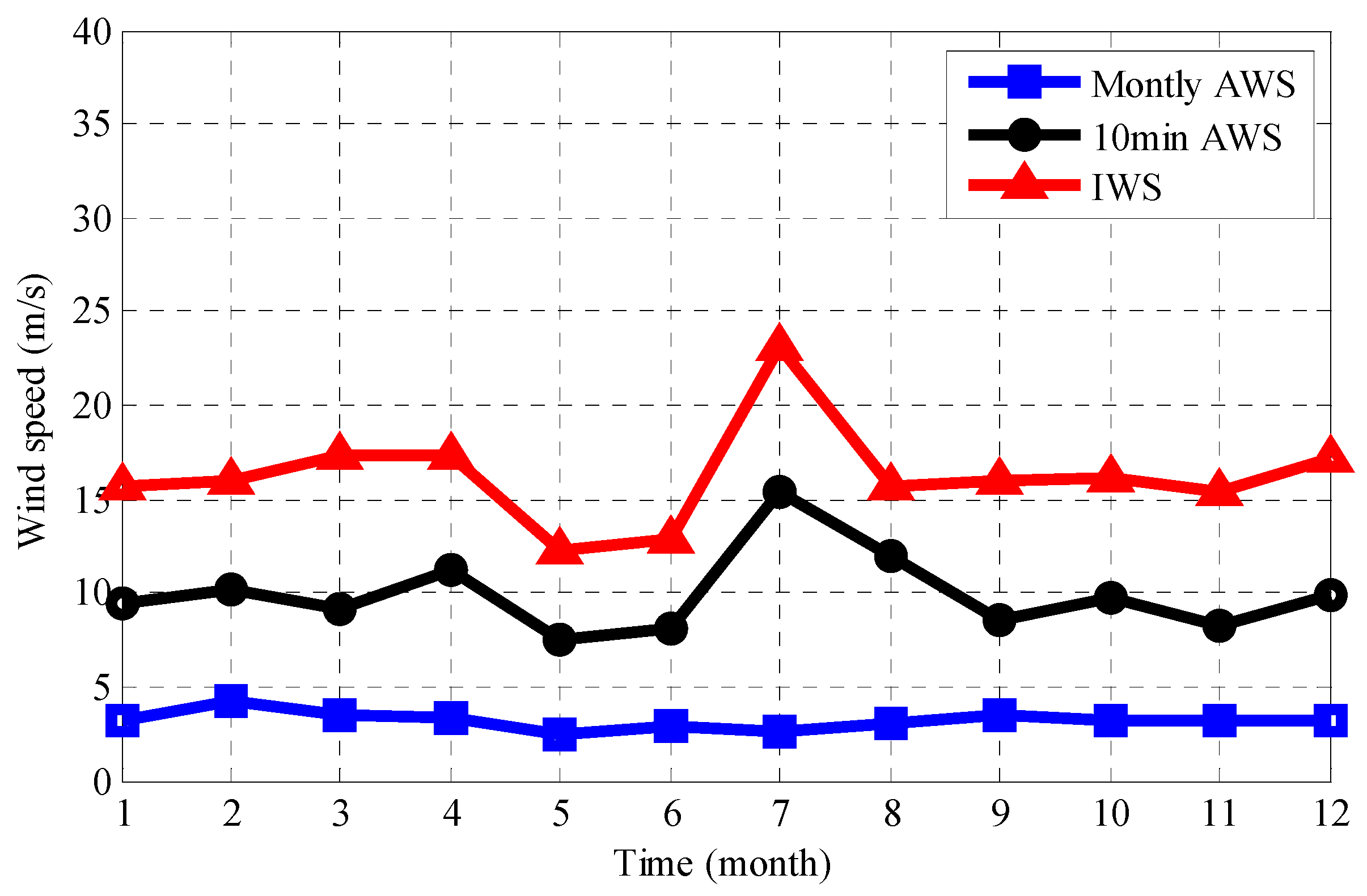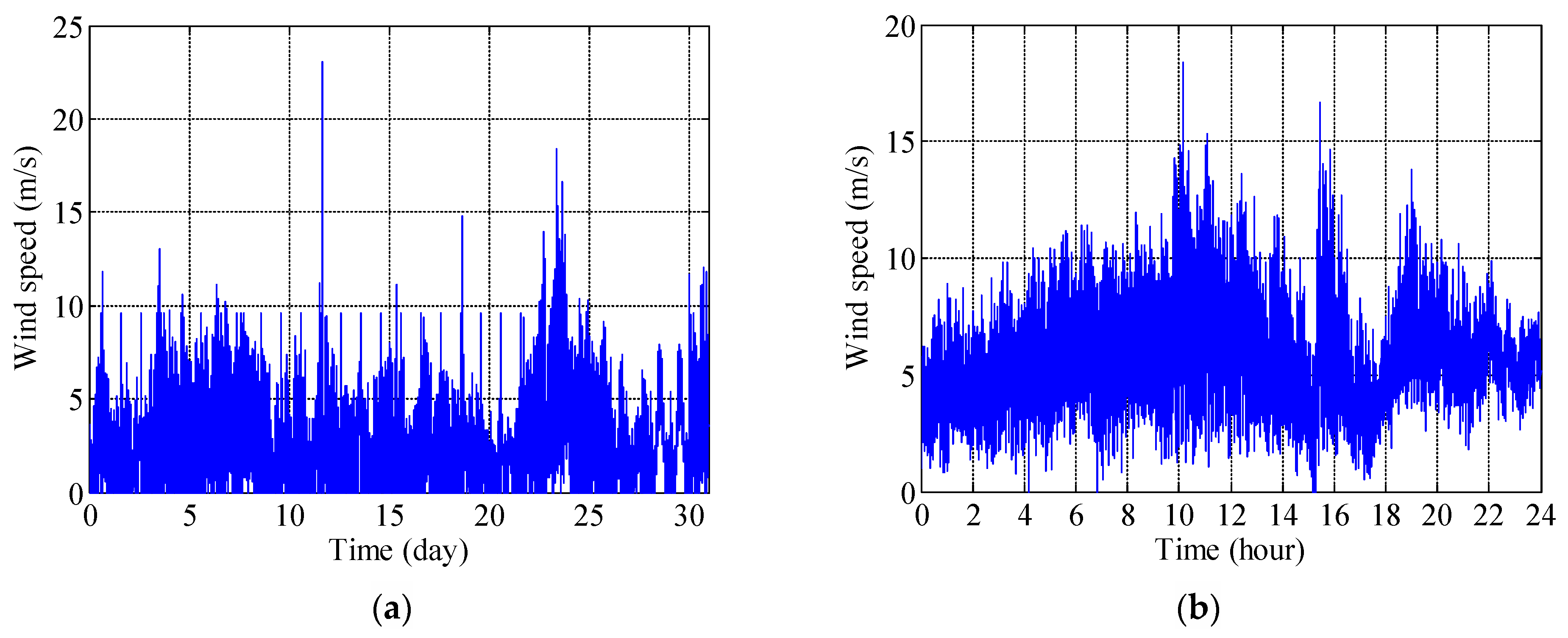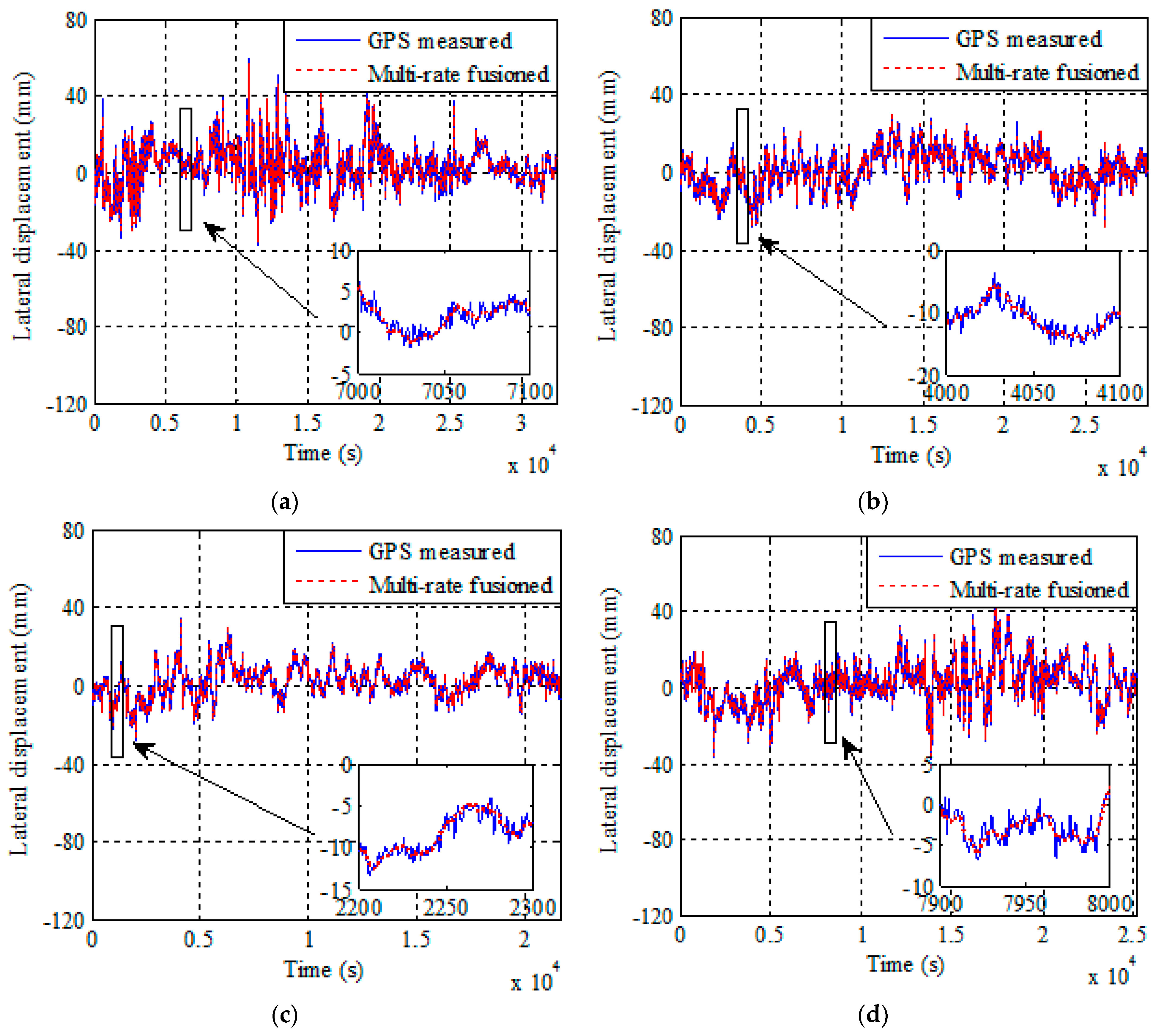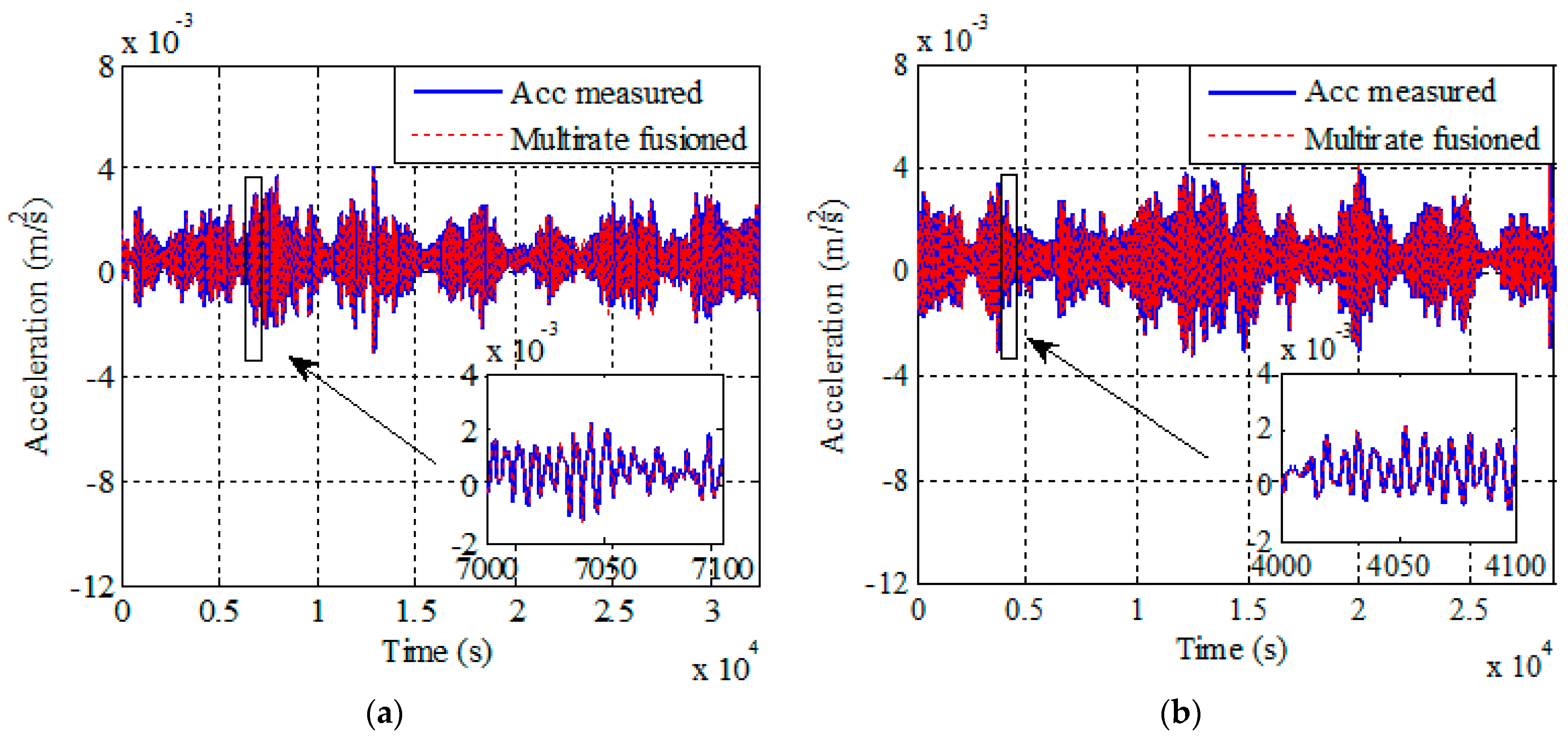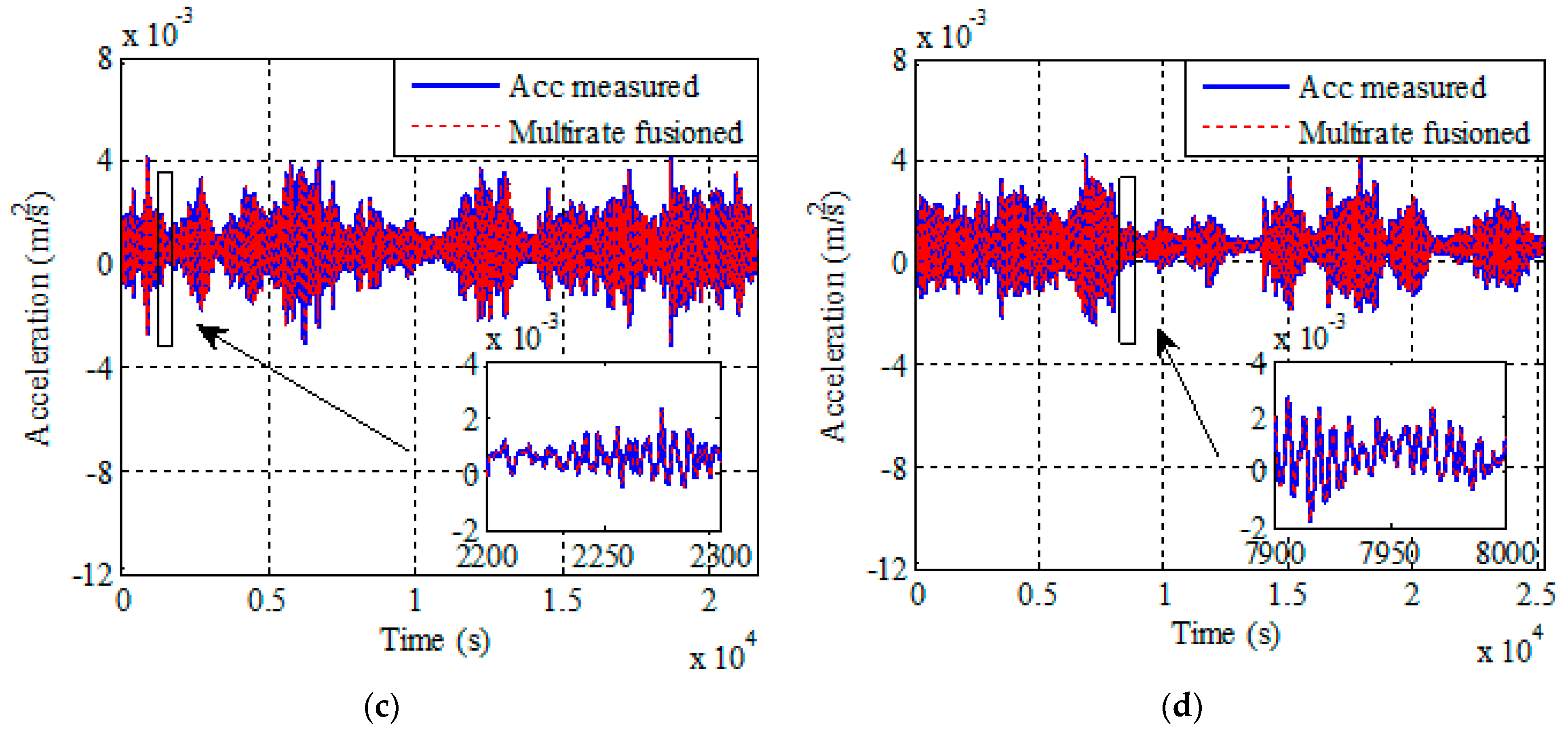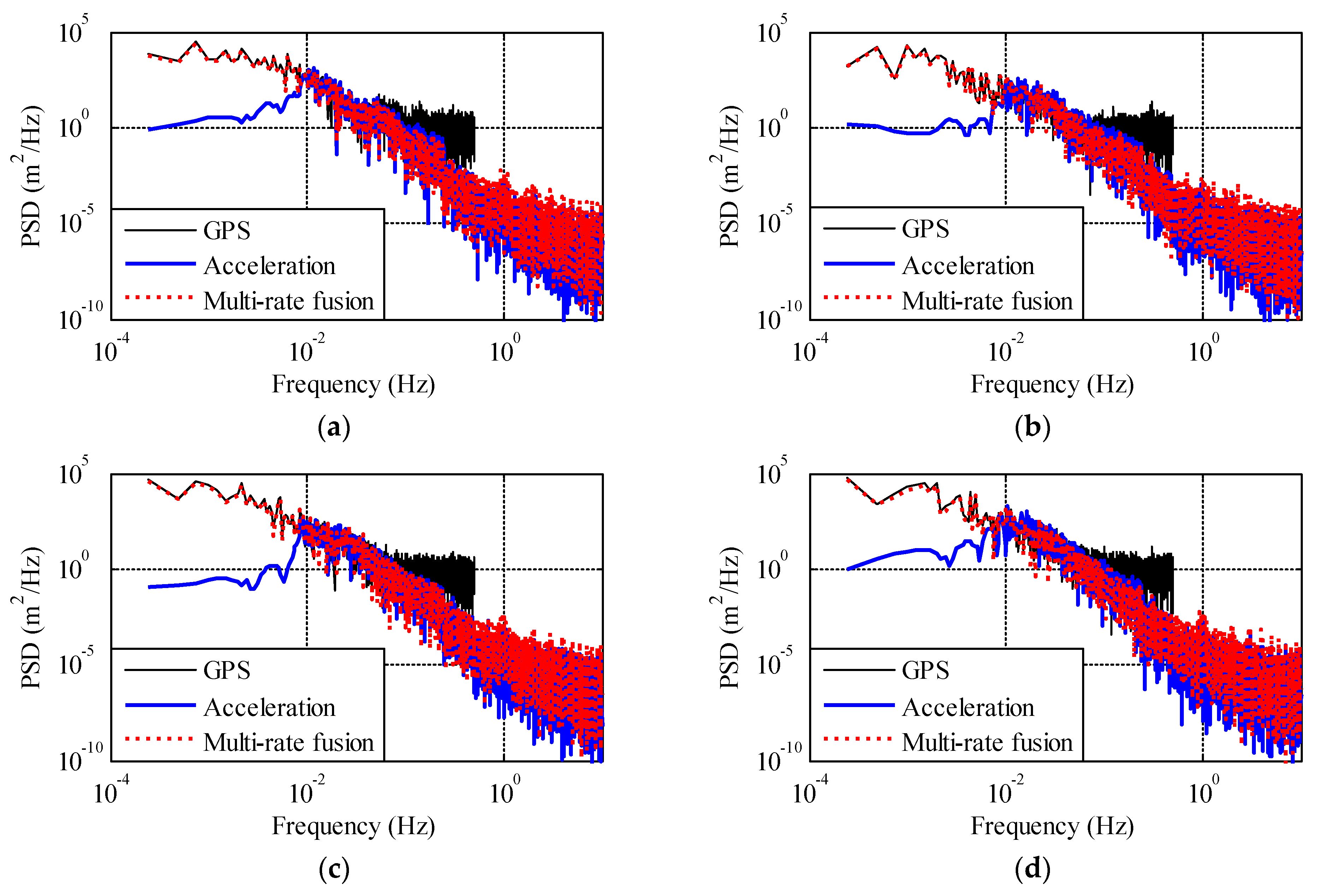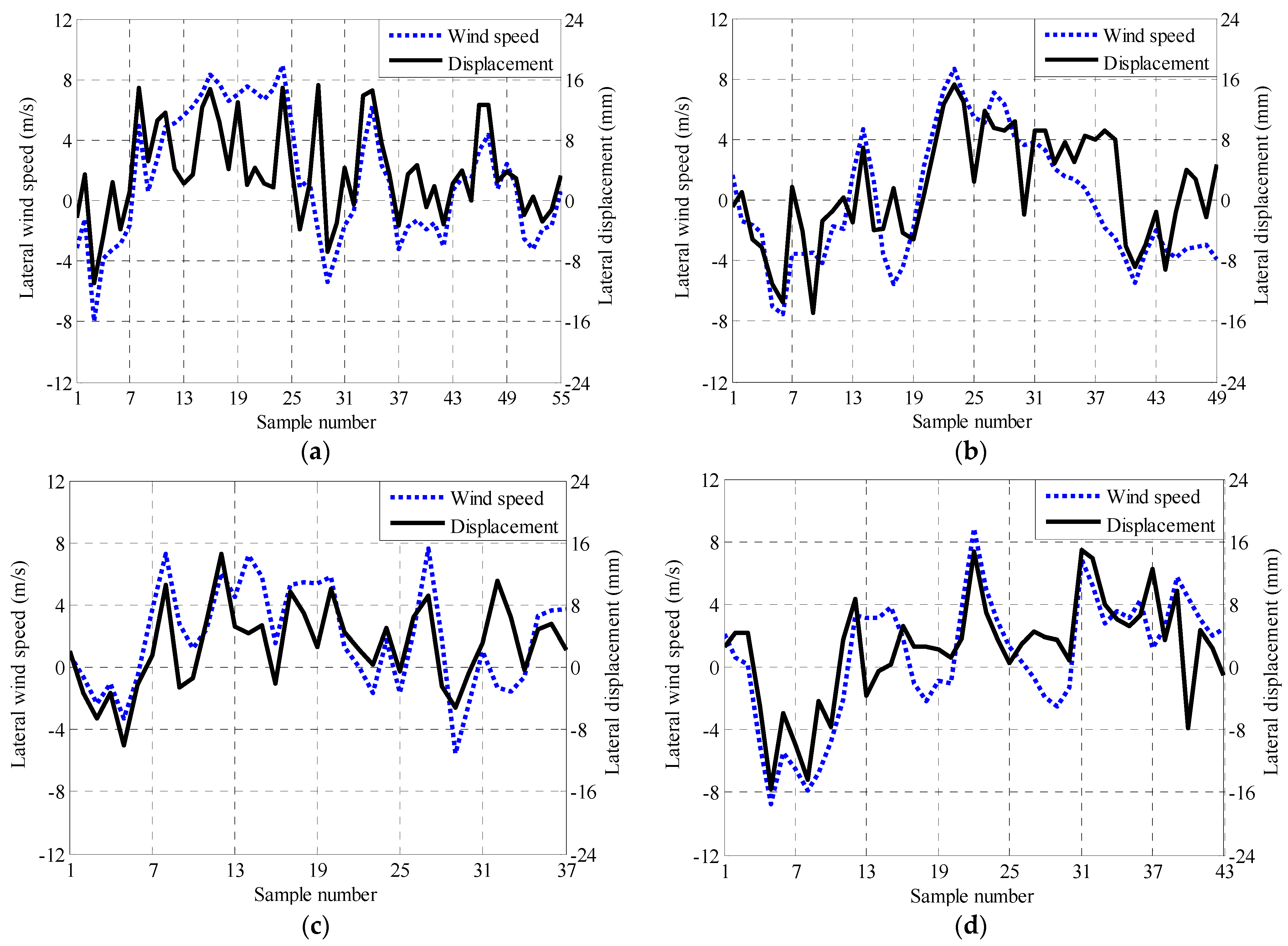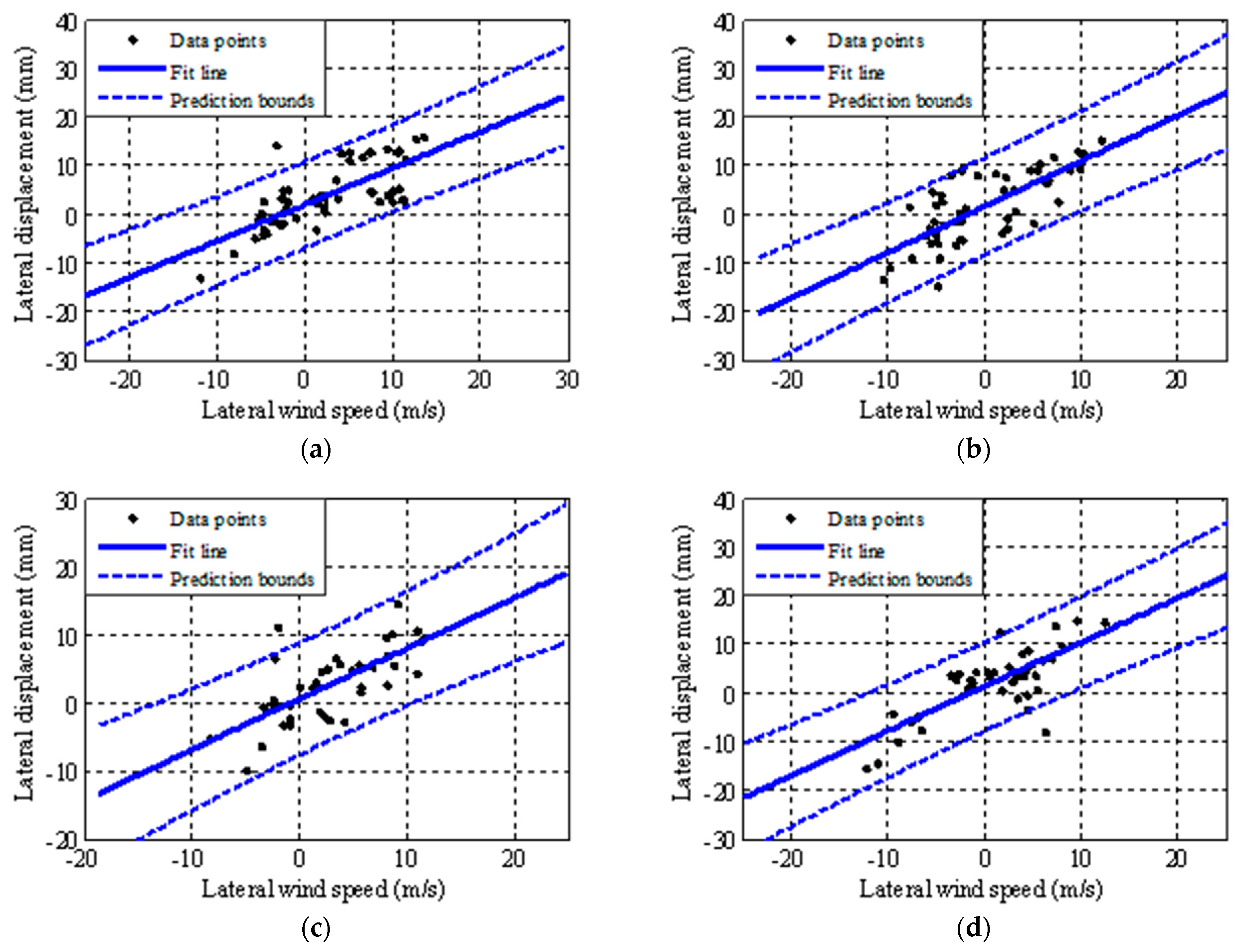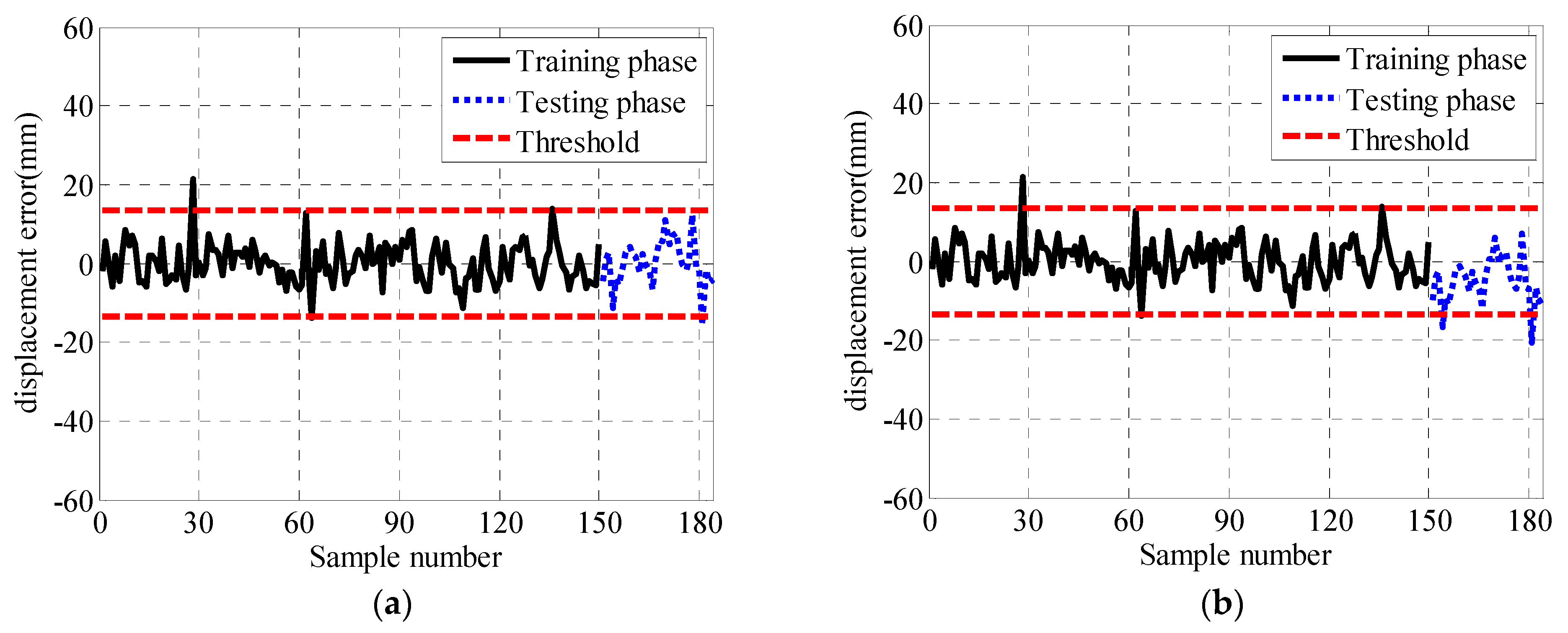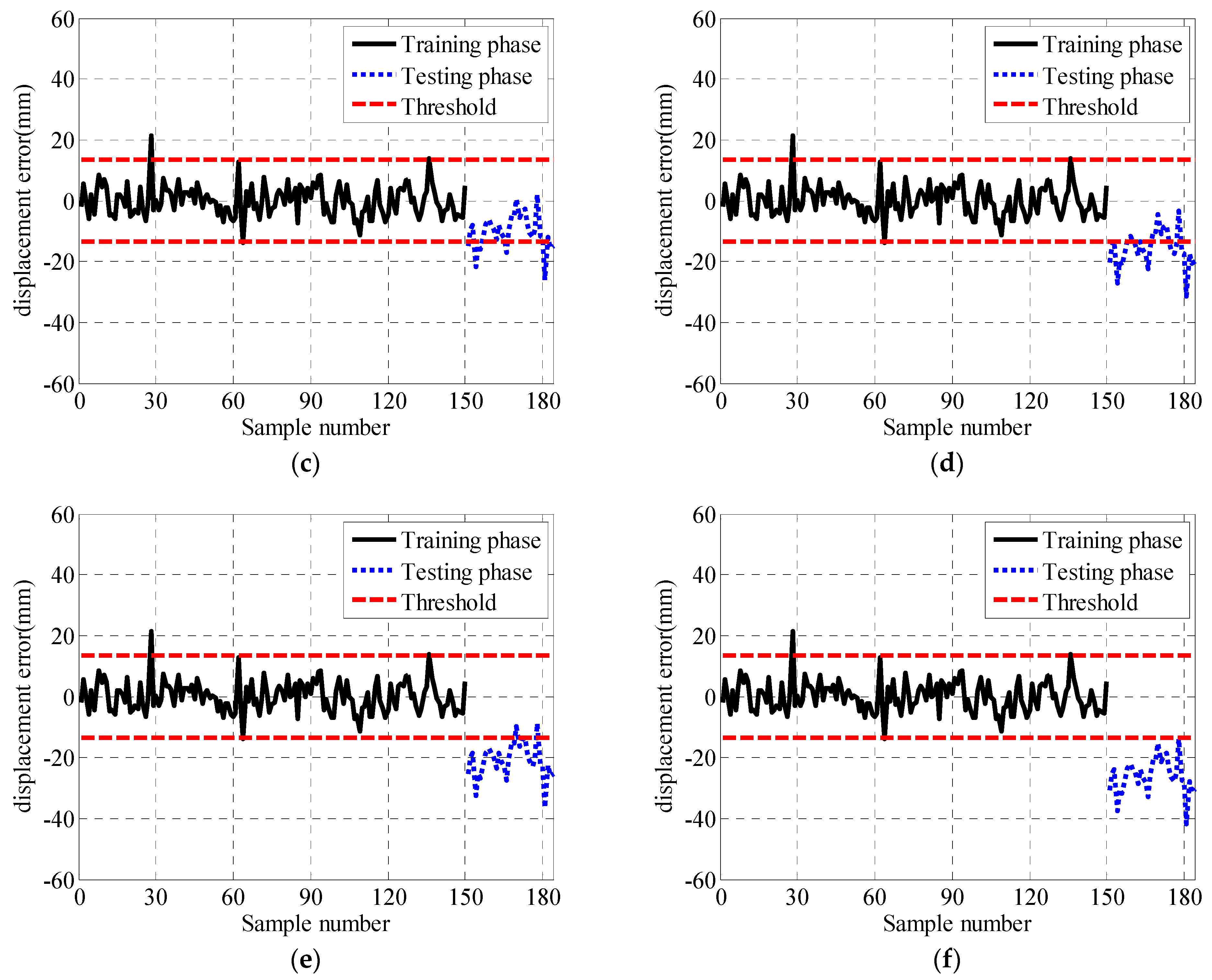In this paper, the multi-rate fusion method is used to modify the displacement and acceleration data with different sampling rates. This paper improves the traditional multi-rate fusion method by setting two Kalman gain coefficients so that the improved multi-rate fusion method can better modify the bridge monitoring data. The displacement and acceleration monitoring data can be corrected simultaneously by using the improved multi-rate fusion method.
2.2. Improved Multi-Rate Fusion Method
In order to better combine with the measured data of the bridge, the traditional multi-rate fusion is improved in this paper. The measurement equation of acceleration and displacement can be expressed as:
where
,
and
are the fused acceleration, velocity and displacement.
,
and
are the associated measurement noise of displacement and acceleration, and
and
are the measured displacement and acceleration. It is assumed that
,
and
are white noise Gaussian processes with covariance
and
, respectively.
Equations (3) and (4) can be compactly written in matrix form as:
where
,
, and
are the measured system matrix, system noises matrix, and measurement matrix, respectively.
and
are the associated measurement noise of displacement and acceleration.
For the convenience of presentation, the measurement equation of displacement and acceleration is given separately:
where
and
are the displacement and acceleration measured value.
and
are the measurement matrix of displacement and acceleration.
Assuming the sampling period of the acceleration is
, the system equation and the observation equation are discrete as:
where
and
are derived by noting that
is nilpotent (i.e.,
= 0)
The optimal state estimation of the state vector is obtained through multi-sensor Kalman filter.
Time update:
where
and
are a posterior estimate of the state vector and the system variance.
The Kalman gain matrix of displacement and acceleration are given by:
In general, the displacement sensor and acceleration sensor have different sampling rates. In this paper, a fusion method based on multi-rate Kalman fusion is presented.
Suppose the sampling period of displacement is
, and it satisfies
/
=
and
is a positive integer. Since there is no displacement measurement value in the
sampling interval, it can be approximated that the variance of the displacement is infinite when the Kalman filter data is fused, the
approaches infinity,
tends to zero, and only needed to time update and measurement update. The measurement update of the multi-rate fusion method is:
It should be pointed out that, at the non- moment, since there are no displacement measurements, only the acceleration time update and measurement update are performed. At the moment, the acceleration and displacement measurements need to be updated simultaneously.
In order to improve the accuracy of the state estimation, the fusion results of multi-rate Kalman filtering need to be smoothed. Kalman filter smoothing is a linear combination of forward Kalman filtering and post-Kalman filtering state based on all observed values. According to the smooth way, there are three types, fixed-interval smoothing, fixed-point smoothing, and fixed-lag smoothing.
In this paper, the fixed-interval is firstly determined by combining the fixed-interval smoothing with fixed-interval smoothing. The state vector of the interval smoothing can be expressed as:
where
is the estimator for the smooth estimate of Kalman at
step.
is the smoothing gain matrix.
2.3. Correction of the Simulated Data through the Improved Multi-Rate Fusion Method
The selected signal is a swept-sine signal with an additional linear trend. The swept-sine signal is chosen because the exact analytical time-histories of displacement and velocity are known, so the errors can be calculated by subtracting the simulated signal from the fused signal. The performance of the improved fusion method can be evaluated by comparing the Root mean square error (RMSE) of Kalman fusion.
The time-history for the displacement can be expressed:
Through the first differentiation and the second differentiation, the velocity time-history and acceleration time-history can be respectively obtained:
where
=
/
and
and
are the start and end frequencies, respectively.
is the sampling time.
is the linear term coefficient.
It can be seen from Equations (26) and (27), that the linear drift term is undetectable in the acceleration term. Therefore, no matter how accurate the acceleration sensor is, the drift cannot be detected. The performance of the fusion can be analyzed and evaluated due to the real time expression of displacement and acceleration are known. Suppose the sampling frequency of acceleration is 1000 Hz and the sampling frequency of displacement is 100 Hz, so the ratio is 10. Noise is added into the true values of displacement and acceleration. The remaining example uses the same method to load noise, which is Gaussian white noise with 10% Root mean square (RMS) noise-to-signal ratio. These noise levels are reasonable for civil engineering applications.
The results of multi-rate data fusion and Kalman smoothing are shown in
Figure 1 and
Figure 2. The figures on the left are the fusion result and the figures on the right are the fusion error. It can be seen from
Figure 1 that the traditional fusion method can only output displacement and velocity data and the error is relatively large. It can be seen
Figure 2 that this scheme provides a good estimation of displacement, velocity, and acceleration, including tracking of drift terms.
Figure 2 shows that the fusion result error is smaller than traditional fusion, and data can be corrected more accurately by smoothing after the improved multi-rate fusion. Better results are obtained by a simple comparison of the results with the traditional multi-rate fusion.
Two conclusions can be drawn by comparing the data in
Table 1. First, the improved multi-rate fusion method is more accurate than the traditional multi-rate fusion method. Second, the traditional multi-rate fusion can only get the displacement and velocity fusion result. However, actual displacement and acceleration monitoring data of bridge mid-span need to be revised simultaneously. Improved multi-rate fusion proposed in this paper can obtain the results of displacement, velocity, and acceleration fusion simultaneously by setting two Kalman gain coefficients.
